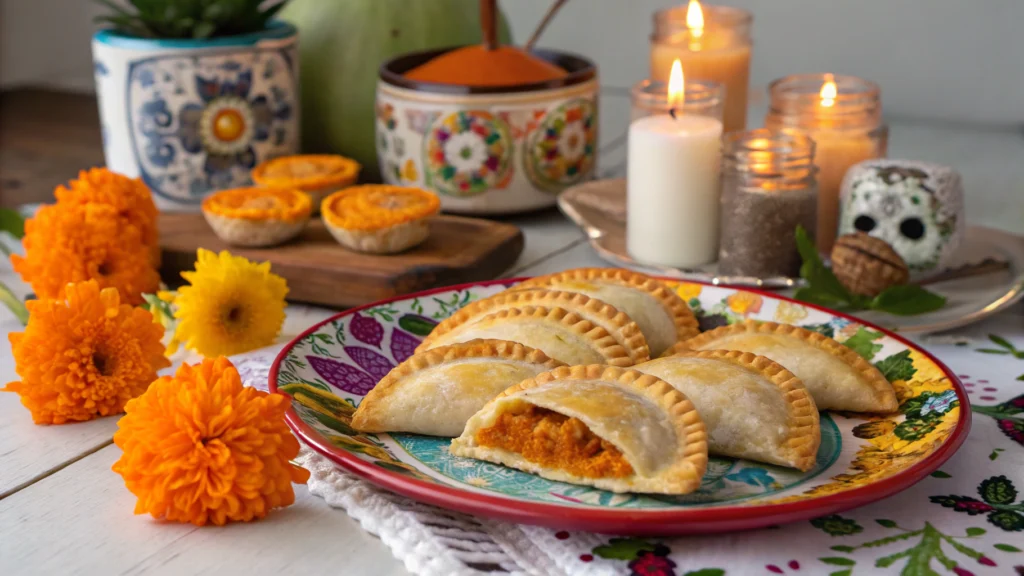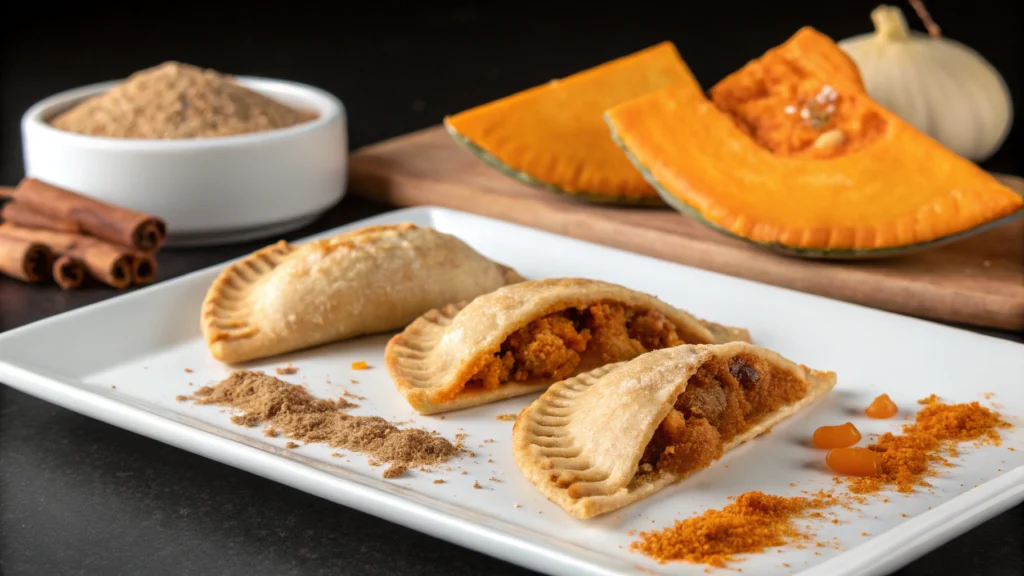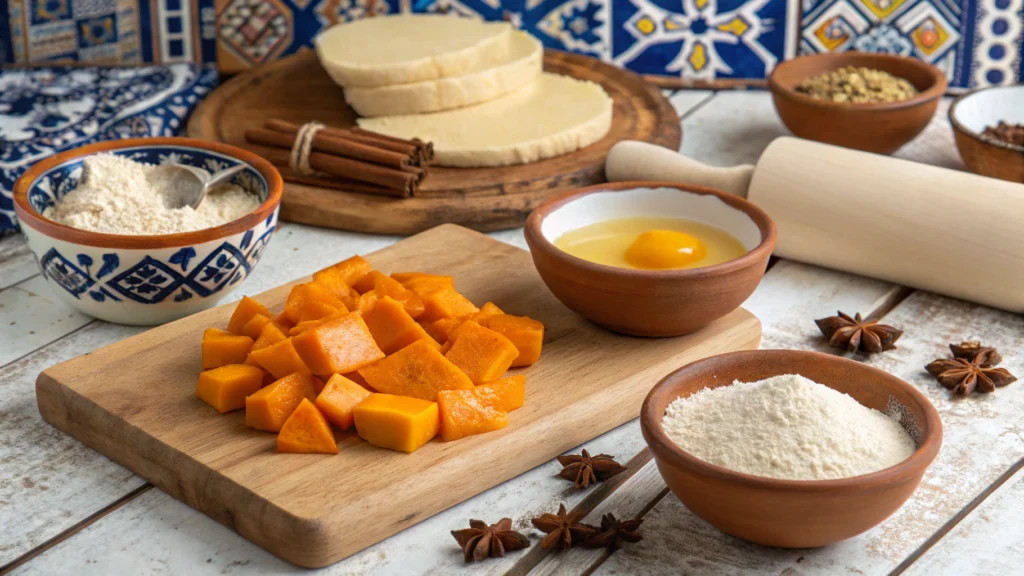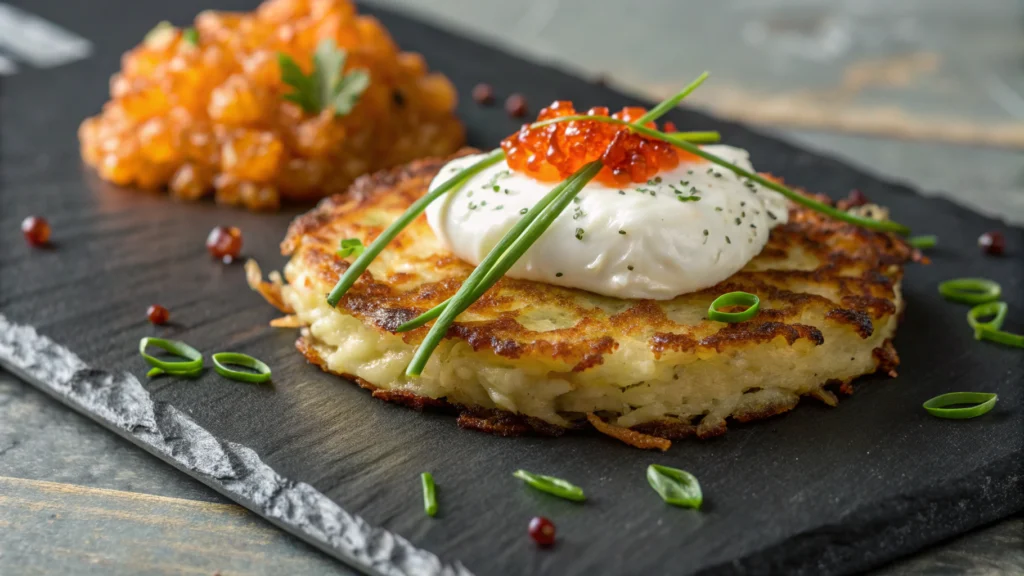
Introduction
The Allure of Empanadas de Calabaza
Calabaza empanadas, radiant half-moon treasures, entice with their crisp, buttery shell and luscious, spiced filling. These pastries, cherished across Mexico and the Southwestern U.S., encapsulate a symphony of flavors—sweet, spiced, and sometimes savory. Their allure lies in their versatility, serving as a comforting snack, a festive dessert, or a savory appetizer that transcends seasons.
Cultural Significance in Mexico and the Southwestern U.S.
Rooted in Mexican culinary heritage, empanadas de calabaza are more than mere pastries; they are emblems of celebration, often gracing tables during holidays like Day of the Dead or Christmas. In the Southwestern U.S., they reflect a fusion of cultures, blending indigenous ingredients like calabaza (a pumpkin-like squash) with colonial baking techniques. This cross-cultural tapestry makes them a beloved staple, evoking nostalgia and community.
Description of Empanadas de Calabaza
A Versatile Culinary Gem
Empanadas de calabaza are handheld marvels, their tender dough encasing a velvety calabaza filling. Whether sweetened with piloncillo or spiced with savory notes, they adapt to palates craving comfort or complexity. Perfect for breakfast with café de olla or as a merienda treat, their portability and flavor make them irresistible.
Historical Roots and Modern Appeal
Tracing back to pre-Columbian Mexico, calabaza has been a dietary cornerstone, its seeds unearthed in ancient sites. The empanada, introduced by Spanish colonizers, married this native squash with European pastry traditions. Today, these pastries remain a festive favorite, their warm spices evoking autumnal coziness while their adaptability suits modern kitchens. From street vendors in Monterrey to panaderías in Texas, empanadas de calabaza weave stories of heritage and innovation, delighting generations with their timeless charm.

Preparation and Cooking Time
Preparation Time Breakdown
Crafting empanadas de calabaza requires about 45 minutes of active preparation. This includes mixing and resting the dough (20 minutes), preparing the filling (15 minutes), and assembling the empanadas (10 minutes). Patience yields perfection.
Cooking Time Details
Baking takes approximately 18–20 minutes at 350°F, with an additional 30 minutes for dough resting to ensure a flaky texture. Total time, including prep, hovers around 1 hour and 15 minutes, delivering 12–14 empanadas.
🥢 Ingredients :

For the Dough
The foundation of a stellar empanada lies in its dough—a balance of tenderness and structure.
✅ 4 cups all-purpose flour
✅ 1 ½ teaspoons salt
✅ 3 tablespoons granulated sugar
✅ ½ cup unsalted butter, chilled and cubed
✅ ¾ cup lard or vegetable shortening
✅ 2 large egg yolks
✅ ¾ cup cold water
For the Calabaza Filling
The filling, rich with earthy sweetness, transforms humble calabaza into a culinary star.
✅ 2 lbs cooked calabaza (or canned pumpkin puree, about 3 cups)
✅ 1 ½ cups piloncillo, grated (or brown sugar)
✅ 2 tablespoons ground cinnamon
✅ ¼ teaspoon ground cloves
✅ 1 teaspoon ground anise
✅ ¼ cup water
👨🍳 Step-by-Step Instructions:
Crafting the Dough
Begin by sifting flour, salt, and sugar into a capacious bowl. Cut in chilled butter and lard using a pastry cutter until the mixture resembles coarse crumbs. Whisk egg yolks with cold water, gradually incorporating into the flour mixture. Knead briefly until a smooth dough forms. Cover and refrigerate for 30 minutes, allowing the gluten to relax for easier rolling.
Preparing the Calabaza Filling
In a saucepan, combine cooked calabaza, piloncillo, water, cinnamon, cloves, and anise. Simmer over medium heat for 15–20 minutes, stirring frequently, until the mixture thickens to a jam-like consistency. Remove from heat and cool to room temperature, ensuring the filling is manageable during assembly.
Assembling the Empanadas
Shape the chilled dough into 12–14 equal portions, forming balls roughly 2 inches wide. On a lightly dusted worktop, flatten each ball into a 6-inch round disc. Spoon ¼ cup of cooled filling onto the lower half of each circle. Fold the dough over, forming a half-moon, and crimp edges with a fork to seal securely.
Baking to Perfection
Preheat the oven to 350°F. Arrange empanadas on greased baking sheets, brushing each with an egg wash (1 egg beaten with 1 tablespoon water) for a golden sheen. Bake for 18–20 minutes, rotating pans halfway through, until the crust is light brown and crisp. Optionally, dust with a cinnamon-sugar blend while warm.
💡 Tips for Perfect Empanadas :
Dough Handling Techniques
Chill the dough thoroughly to prevent stickiness. Roll evenly to avoid thin spots that may tear. If the dough becomes too warm, refrigerate briefly before continuing. A tortilla press can expedite shaping, ensuring uniform circles.
Filling Consistency and Flavor
Cook the filling until thick to prevent sogginess. Taste and adjust sweetness or spices, as piloncillo’s molasses-like depth varies. For a savory twist, incorporate goat cheese or roasted peppers, balancing calabaza’s natural sweetness.
Storage and Reheating
Store empanadas in an airtight container at room temperature for up to 2 days or freeze for 2 months. Reheat frozen empanadas in a 350°F oven for 5–7 minutes for crispness. Avoid microwaving to preserve the flaky texture.
📊Nutrition Information (per serving)
Caloric Content and Macronutrients
Per empanada (based on 12 servings):
- Calories: 254 kcal
- Total Fat: 6 g
- Saturated Fat: 1 g
- Cholesterol: 42 mg
- Sodium: 109 mg
- Total Carbohydrate: 46 g
- Dietary Fiber: 4 g
- Sugars: 20 g
- Protein: 6 g
Health Considerations
Calabaza is a nutritional powerhouse, rich in vitamins A and C, and antioxidants like beta-carotene. The dough, while indulgent, can be modified with whole wheat flour for added fiber. Moderation is key due to the sugar and fat content, but these empanadas offer a wholesome treat when enjoyed sparingly.
you may like it








please don’t forget to leave a review
